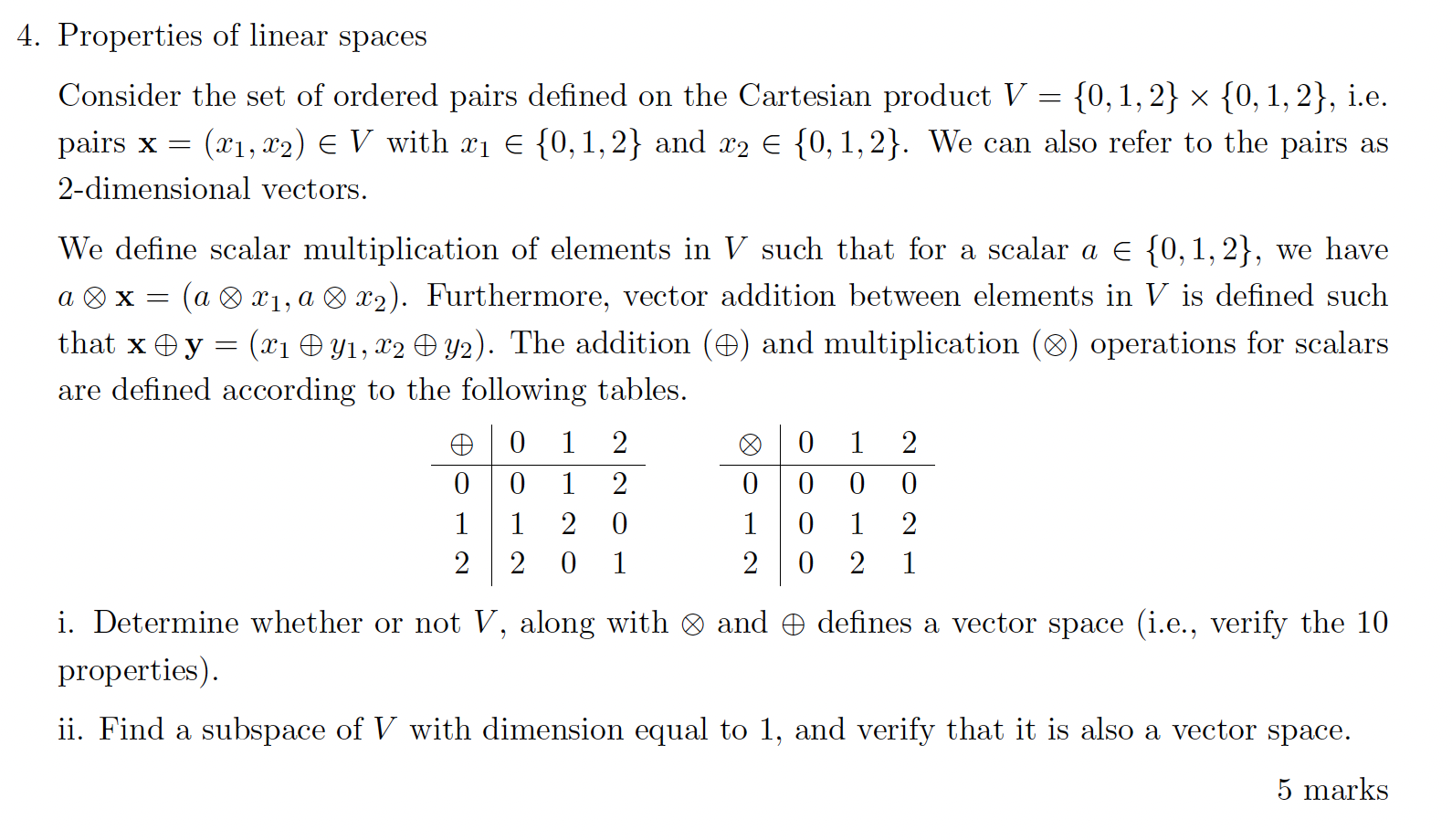Home /
Expert Answers /
Advanced Math /
properties-of-linear-spaces-consider-the-set-of-ordered-pairs-defined-on-the-cartesian-product-pa871
(Solved): Properties of linear spaces Consider the set of ordered pairs defined on the Cartesian product \( ...
Properties of linear spaces Consider the set of ordered pairs defined on the Cartesian product \( V=\{0,1,2\} \times\{0,1,2\} \), i.e. pairs \( \mathbf{x}=\left(x_{1}, x_{2}\right) \in V \) with \( x_{1} \in\{0,1,2\} \) and \( x_{2} \in\{0,1,2\} \). We can also refer to the pairs as 2-dimensional vectors. We define scalar multiplication of elements in \( V \) such that for a scalar \( a \in\{0,1,2\} \), we have \( a \otimes \mathrm{x}=\left(a \otimes x_{1}, a \otimes x_{2}\right) \). Furthermore, vector addition between elements in \( V \) is defined such that \( \mathbf{x} \oplus \mathbf{y}=\left(x_{1} \oplus y_{1}, x_{2} \oplus y_{2}\right) \). The addition \( (\oplus) \) and multiplication \( (\otimes) \) operations for scalars are defined according to the following tables. i. Determine whether or not \( V \), along with \( \otimes \) and \( \oplus \) defines a vector space (i.e., verify the 10 properties). ii. Find a subspace of \( V \) with dimension equal to 1 , and verify that it is also a vector space. 5 marks
